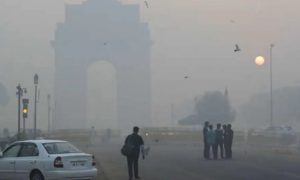From inside her living room in London, Paula Koelemeijer can feel the world around her growing quieter.
Koelemeijer, a seismologist, has a miniature seismometer sitting on a concrete slab at the base of her first-floor fireplace. The apparatus, though smaller than a box of tissues, can sense all kinds of movement, from the rattle of trains on the tracks near Koelemeijer’s home to the waves of earthquakes rolling in from afar. Since the United Kingdom announced stricter social-distancing rules last month, telling residents not to leave their home except for essential reasons, the seismometer has registered a sharp decrease in the vibrations produced by human activity.
With fewer trains, buses, and people pounding the pavement, the usual hum of public life has vanished, and so has its dependable rhythms: Before the spread of COVID-19 shut down the city, Koelemeijer could plot the seismometer’s data and see the train schedule reflected in the spikes, down to the minute. Now, with fewer trains running, the spikes seem to come at random.
“It’s very literally reflecting a slowdown of our lives,” Koelemeijer told me over Skype.
Koelemeijer said she briefly geeked out over the recent data before reality set in. At first glance, this is indeed a fascinating observation, the kind of factoid that might appear on the underside of a Snapple cap. The “wow” moment is short-lived, of course, because the explanation is not a quirk of nature or some other benign eccentricity, but a catastrophic virus that has sickened and killed thousands, crumpled economies, and plunged public life into a fearful limbo with no easily discernible end.
But the response to the pandemic has unwittingly produced some other large-scale, though less conspicuous, effects. In a bittersweet twist, the surreal slowdown of life as we know it has presented researchers with a rare opportunity to study the modern world under some truly bizarre conditions, and they’re scrambling to collect as much data as they can. Here are four ways the pandemic is being felt across land, air, and sea.





































